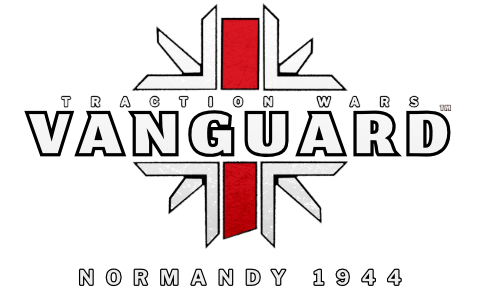How Vanguard’s Primary Gamemode has Developed Over Time
Today we are going to talk about Vanguard’s main gamemode, Raid, recapping the mechanics and looking at how it has evolved over time based on the valuable feedback from our players and our own observations from playing with the community.
Explaining the mechanics: The Basics
Raid is an attack/defense-based objective capture gamemode in which a map is divided into multiple phases. Each phase covers one area of the map and contains one to three objectives (represented by radio transmitters) scattered around that area.
In order to advance to the next phase, the attackers (Allies) must activate any one of these radio transmitters within a time limit. This freedom of choice gives the attackers a multitude of options in how they can approach the objectives and forces the defenders (Axis) to be flexible in their positioning, helping to ensure each match is a unique experience.
Once a phase is completed, the attackers are given a short “intermission” period of time to clear out any remaining Axis forces, after which that area of the map becomes the attackers’ new staging area and the next area’s objectives are unlocked with a refreshed timer. Any dead attackers are revived for free when the new phase begins.

Capturing Objectives
The capture mechanic is one of the areas of the gamemode that has evolved the most over time. At initial launch, the capturing player was hardlocked in the animation for a fixed period of time, the intention being that players were forced to defend the capturing player as they were vulnerable. In reality however, this hardlock was found to be too restrictive and left the player helpless when that player was the only attacker alive. Players can now cancel their capture if they sense a threat, or to set up an ambush on the responding defenders. However, this comes with the cost of resetting the capture timer.

We also made adjustments to the capture timer. Over time, we found that often players go into “lone wolf” mode, forgoing teamwork and sneaking to capture objectives by themselves. As Vanguard is intended to be a tactical team-based game, we significantly increased the capture timer and added a capture speed multiplier based on the number of teammates nearby to reward groups of players capturing together
Explaining the mechanics: Life and Death
With Raid, we wanted every player’s life and death to matter. Players spawn in waves, which are triggered either manually by one of the team’s squad leaders (NCOs) or automatically when all of the team’s players are dead. Each team has a limited number of waves, with the attackers having additional waves. To offset this advantage, the defenders can see how many waves the attacking team has remaining.
Waves can be manually triggered by either NCO, a tactical decision players can make. Do you trigger your waves early after just a few deaths to ensure your current forces are always at their peak and to maintain momentum, or do you wait to maximise the number of players respawned?

Waves and Spawning
We noticed in the early testing of the game that if the Axis forces began to dominate a round, it became very easy for them to kill the Allies as they respawn.
To combat this, we added a killzone around the Allies’ spawn that kills any defender that stays within its radius for too long. These zones are updated immediately upon phase end to ensure the Germans retreat back to the new objectives during the short period to regroup and retreat.

Explaining the mechanics: Victory
The defenders have two avenues to victory. They can either prevent the attackers from completing all of the phases within the time limit or completely deplete the attacking team’s forces (both waves and lives).
The attackers only have one primary victory condition: complete all of the phases within the time limit.
The exception to this rule is if all the defending waves have been depleted. If this happens, the attackers only have to capture the next objective to be victorious.
Explaining the mechanics: Last Man Standing
If the attackers deplete all of the defenders’ waves, the Last Man Standing mechanic is triggered which is unique to the defending team.
This mechanic is a “final last stand”, spawning the defending player with the highest score and giving them a sniper kit to defend the current objective(s) alone.
Should they die, the next highest scoring player is spawned, going down the line of players until there are none left. The time between the death of the last stand player and the spawn of the next player increases each time.
During this time the attackers only need to capture one objective to be victorious.

Victory and Last Stand
The victory and last stand mechanics have remained largely unchanged, though we have improved how we present information to players over time to make it easier to understand for new players and to reward teamwork.
Scoring has been updated and refined to reward teamwork over achieving the most kills and the game over screen redesigned to include more stats of both the player’s and the squad’s performance.


